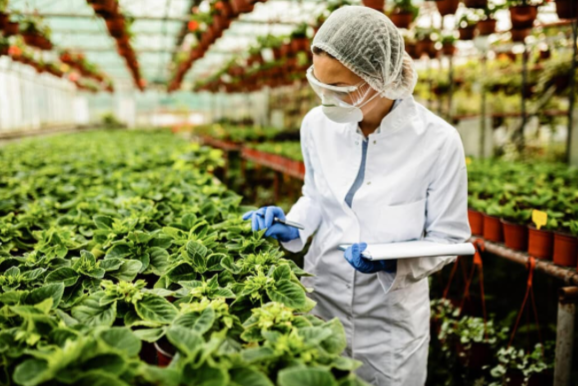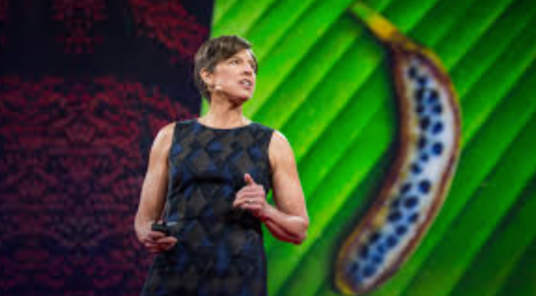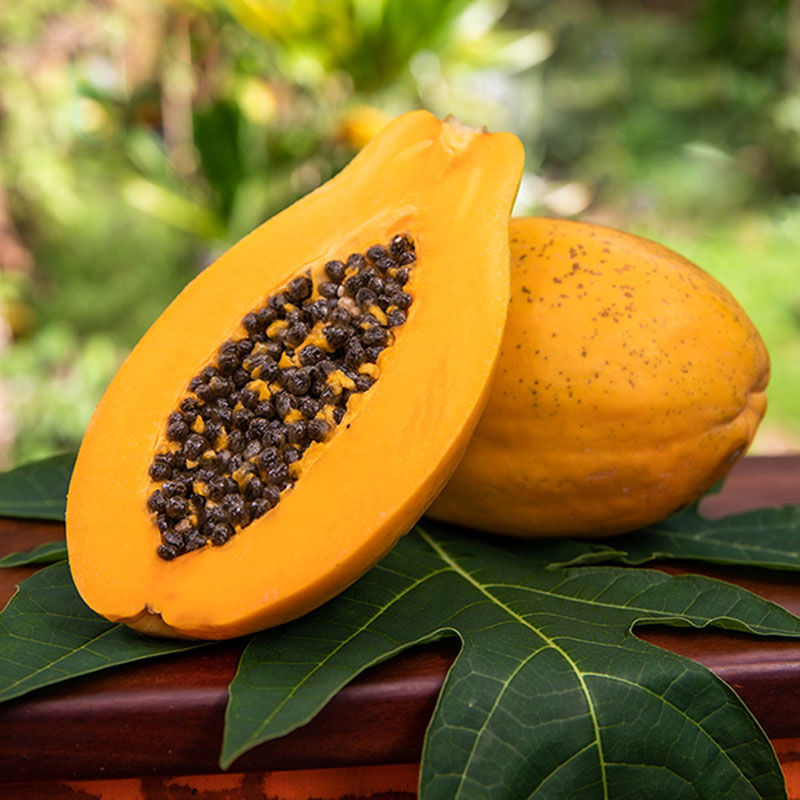Agricultural Biotechnology: Scientific Breakthroughs, Business Potential, and Social Stigma
- aliecats16
- Jul 28
- 4 min read
By Ruthvik Yaparla
Imagine feeding a planet of 9 billion people using less land, fewer chemicals, and more sustainable practices. Sounds like a lofty dream?
It’s actually the central mission of agricultural biotechnology. This field merges biology with big-picture business and, sometimes, polarizing public opinion.

Source: Bartel, Jeff. “Biotechnology in Agriculture for Investors | Hamptons Group.” Hamptons Group, Mar. 2024, hamptonsgroup.com/blog/biotech-agriculture-investment-insights.
From disease-resistant rice that saves millions of farmers from crop loss to vitamin-enhanced grains designed to fight childhood blindness, agricultural biotech is one of science’s boldest answers to food security and climate resilience. Yet, despite the incredible potential, the field faces a paradox: the science is solid, but public trust is shaky.
So, why is that? And what’s at stake? Let’s explore the science, the business, and the controversy surrounding one of the most revolutionary and misunderstood industries of our time.
What Exactly Is Agricultural Biotechnology?
Agricultural biotechnology involves applying genetic techniques to improve crops, livestock, and agricultural systems. This can include everything from grafting and crossbreeding to precision gene editing and transgenic engineering. While farmers have been modifying plants for thousands of years—think turning bitter, seed-filled wild bananas into the sweet snack we eat today—modern biotechnology allows for more precise, effective, and faster changes.
Take Pamela Ronald, a plant geneticist who studies genes that help crops tolerate stress and resist disease (1). Her team’s work on flood-tolerant and disease-resistant rice varieties has helped farmers in Asia grow more resilient crops—particularly vital for smallholder farmers living on less than $2 a day.

Source: The Genetic Engineering of Plants Is Vital: Pamela Ronald at TED2015 | TED Blog. blog.ted.com/why-genetic-engineering-of-plants-is-vital-for-food-security-pamela-ronald-speaks-at-ted2015/.
Science in Action: Rice That Defies Floods
One of the most powerful examples of biotech’s potential is Sub1 rice, a variety genetically engineered to survive underwater for over two weeks. In parts of Bangladesh and India, where flooding is frequent and devastating, this gene has saved harvests and livelihoods. In field tests, Sub1 rice produced 3.5 times more grain than traditional varieties after flooding. With support from the Bill and Melinda Gates Foundation, over 3.5 million farmers have already adopted it.

Source: Le, Vincent. “Engineering Submergence Tolerance in Rice.” The Ronald Laboratory, 16 Dec. 2012, cropgeneticsinnovation.ucdavis.edu/engineering-submergence-tolerance-rice.
When Biotech Saves Industries: The Papaya Story
In Hawaii, papaya farmers faced extinction in the 1990s when papaya ringspot virus decimated crops. Enter Rainbow papaya, created by Hawaiian-born scientist Dennis Gonsalves using a snippet of viral DNA to build immunity in the fruit—similar to how vaccines work in humans. Today, over 90% of Hawaiian papaya is genetically modified (2), and the industry thrives.Ironically, eating an infected non-GMO papaya exposes consumers to ten times more viral protein than eating the engineered one (1).

Golden Rice and the Battle Against Blindness
Golden Rice is engineered to produce beta-carotene, the precursor to vitamin A. In regions where children suffer from severe vitamin A deficiencies—often leading to blindness or death—Golden Rice could save lives. Researchers estimate that just one cup a day could prevent irreversible harm in millions of children (1).

Source: International Rice Research Institute. “Golden Rice FAQs.” International Rice Research Institute, International Rice Research Institute, 2018, www.irri.org/golden-rice-faqs.
But progress hasn’t been easy. Field trials in the Philippines were destroyed by anti-GMO activists, delaying access to this life-saving technology by decades (3). Meanwhile, over 100 Nobel Laureates have signed an open letter condemning Greenpeace and other organizations for blocking such innovations.
The Business of Biotech: Promise or Pitfall?
Let’s not sugarcoat it: the commercial side of agricultural biotech has raised real concerns. In 1996, Monsanto introduced Roundup Ready crops—engineered to resist the company’s own herbicide, Roundup. While these crops boosted yields, they also tied farmers to a chemical cycle and corporate supply chain.
One study found that glyphosate, the active ingredient in Roundup, was associated with a 41% increase in cancer risk (4). While debates continue over the strength of this correlation, the concern is legitimate and warrants better transparency and independent oversight.

The Price of Fear: When Opposition Hinders Progress
Public fear doesn’t just hurt sales—it hurts science. Anti-GMO rhetoric has made it harder for researchers to get funding or conduct trials. Some scientists have even abandoned promising genetic work due to public backlash and institutional pressure.In some cases, the opposition becomes destructive. Field trials of Golden Rice in the Philippines were vandalized, and some GM crops have even been burned by activists.Such actions don’t just delay science; they risk the lives of those who stand to benefit the most.
The Path Forward: Trust, Transparency, and Responsibility
Agricultural biotechnology isn’t about replacing nature; rather, it’s about working with it more intelligently. In a world facing climate change, resource scarcity, and rising food insecurity, we need tools that help us grow more with less. But this future depends on something bigger than innovation: public trust. We must evaluate biotech products case by case, demand transparent data, and support research—both supportive and critical. Scientists, not slogans, should lead the conversation.
So, the next time you stroll through the grocery aisle and spot that “non-GMO” label, ask yourself: What do I actually know about what’s in this food? Who made it? And is this label informing me or manipulating me? Because agricultural biotechnology is about more than just crops. It’s about people, the planet, and whether we're willing to use science not just to survive, but to thrive.
References
Ronald, Pamela. “The Case for Engineering Our Food.” Ted.com, TED Talks, 2015, www.ted.com/talks/pamela_ronald_the_case_for_engineering_our_food.
Held, Elizabeth. “How GMO Technology Saved the Papaya.” IFIC Foundation, 14 June 2016, foodinsight.org/how-gmo-technology-saved-the-papaya/.
McGrath, Matt. ““Golden Rice” GM Trial Vandalised in the Philippines.” BBC News, 9 Aug. 2013, www.bbc.com/news/science-environment-23632042.
“The Perils of GMO Research: A Scientist Speaks Out.” Alliance for Science, allianceforscience.org/blog/2018/05/perils-gmo-research-scientist-speaks/.




Comments